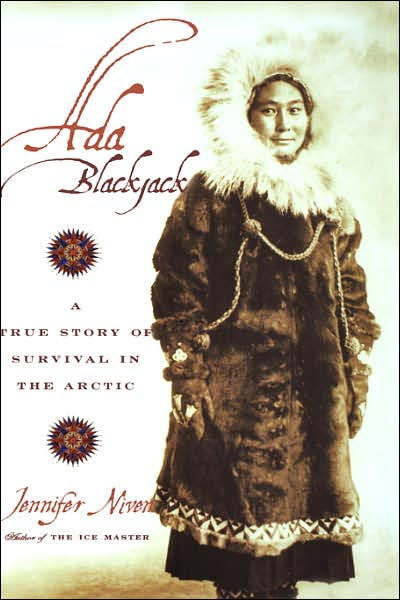


The 1921 team was too small, too untrained, and didn’t find the same amount of wildlife that the earlier crew did. (The author chooses to use terminology appropriate to the time period.) Russia had claimed Wrangel Island decades earlier but Stefansson felt that his earlier team’s extended occupation of the island called that claim into question. Stefansson sent a group of four young men and Ada Blackjack, a young Eskimo seamstress, to lead the way for colonizing efforts in 1921.

Stefansson, a proponent of the idea of the “Friendly Arctic,” soon had dreams to claim the island for Canada and Great Britain and use it as a waystation for people making their way through the frozen north. After essentially rescuing themselves, the survivors of the smaller group told stories of the rich wildlife they encountered on the island. The team was separated and one group spent time on Wrangel Island, 200 miles northeast of Siberia and 400 miles northwest of Alaska. In 1913, Vilhjalmur Stefansson led an ill-fated voyage into the Arctic. Ada Blackjack is more than a rugged tale of a woman battling the elements to survive in the frozen north-it is the story of a hero. Jennifer Niven has created a compelling history of this remarkable woman, taking full advantage of the wealth of first-hand resources about Ada that exist, including her never-before-seen diaries, the unpublished diaries from other primary characters, and interviews with Ada's surviving son. Only on one occasion-after charges were published falsely accusing her of causing the death of one her companions-did she speak up for herself. But whatever stories the press turned out came from the imaginations of reporters: Ada Blackjack refused to speak to anyone about her horrific two years in the Arctic. Following her triumphant return to civilization, the international press proclaimed her the female Robinson Crusoe. This young, unskilled woman-who had headed to the Arctic in search of money and a husband-conquered the seemingly unconquerable north and survived all alone after her male companions had perished. Two years later, Ada Blackjack emerged as the sole survivor of this ambitious polar expedition. In September 1921, four young men and Ada Blackjack, a diminutive twenty-five-year-old Eskimo woman, ventured deep into the Arctic in a secret attempt to colonize desolate Wrangel Island for Great Britain.


 0 kommentar(er)
0 kommentar(er)
